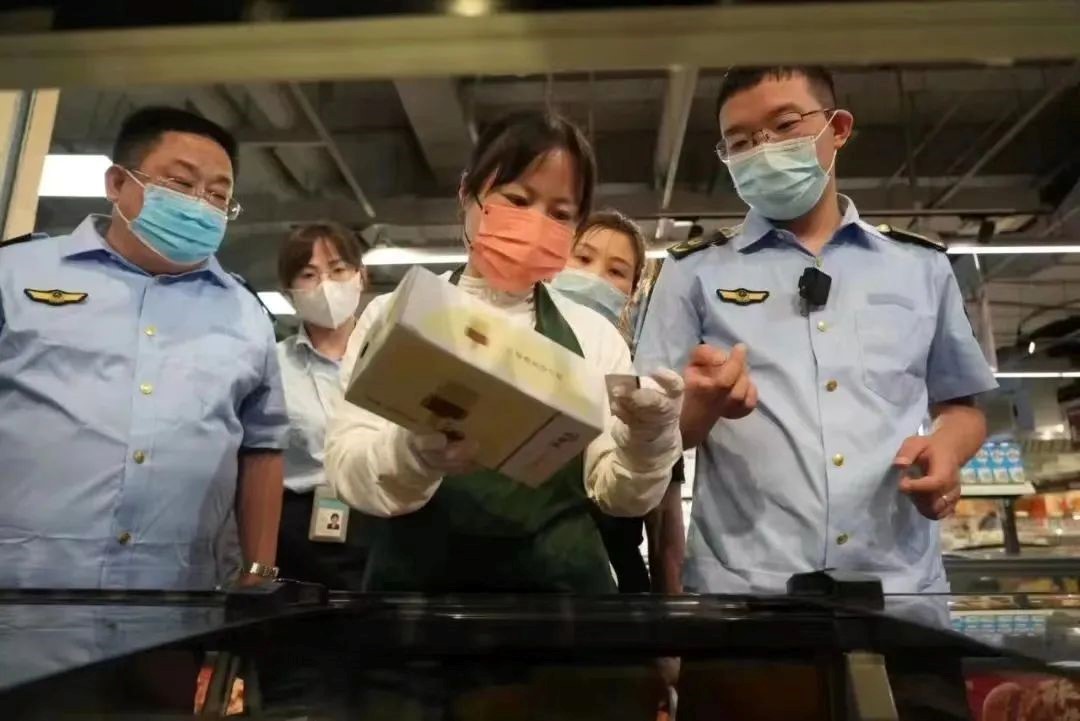您现在的位置是:黄金讯数字分析 > 财经视角
中国消费者报合肥讯 近日
黄金讯数字分析2025-08-01 22:27:47【财经视角】5人已围观
简介中国消费者报合肥讯近日,有关“雪糕刺客”等商品的舆情信息在网络上持续发酵,引发社会广泛关注。安徽省市场监管局结合《明码标价和禁止价格欺诈规定》的颁布实施,组织全省市场监管部门对相关商品经营单位开展巡查
中国消费者报合肥讯 近日,安徽有关“雪糕刺客”等商品的省多市场舆情信息在网络上持续发酵,引发社会广泛关注。地市安徽省市场监管局结合《明码标价和禁止价格欺诈规定》的场监颁布实施,组织全省市场监管部门对相关商品经营单位开展巡查检查。管部

执法人员在巡查。资料图片
合肥市市场监管局对商品明码标价等问题进行检查,冷饮共排查大型商场、价格检查超市、开展小商店、巡查冷饮批发商共8家,安徽对现场发现的省多市场货签不对位、价签不醒目、地市未明码标价等问题现场指导整改,场监下达责令整改通知2份,管部并通过媒体提醒告诫广大经营者自觉做到诚信经营、价格自律。
淮北市市场监管局开展了抓“刺客”——明码标价专项检查行动,出排查商超、冷饮店、雪糕批发店等各类场所共10家,发现6家经营主体销售雪糕时明码标价不够规范,市场监管执法人员现场进行告诫,并督促整改。
铜陵市市场监管局在驻局纪检组的带领下,对冷饮市场开展突击检查,现场将《明码标价和禁止价格欺诈规定》详细告知经营者,告诫经营者必须做好商品明码标价工作,切实履行经营者主体责任。同时,对3家明码标价不规范的商户进行了现场整改。
此外,滁州、蚌埠、淮南等地先后组织力量对辖区内商品明码标价情况进行专项检查。
据了解,截至目前,安徽省系统共检查商超、冷饮批发商等524家,其中有57家商户因明码标价不规范被现场责令整改。
安徽省市场监管局相关处室要求各地市场监管部门加强法律法规宣传,强化市场巡查检查,加大价格监管执法力度,依法查处未按规定明码标价、价格欺诈等价格违法行为。对性质严重、社会影响大的典型案例要公开曝光,发挥震慑和警示作用。(陶维)
责任编辑:李佳榕很赞哦!(17776)
站长推荐
友情链接
- 亚玛顿:在加紧对光伏玻璃海外基地建设做筹划和考察,行业资讯
- 北京石景山紧急彻査汉堡王 未发现问题
- 沙河玻璃工业园年底前将建成4条玻璃生产线,行业资讯
- 优衣库新品预告 精简时尚 休闲个性
- 绿色植物对室内空气污染的净化作用(一)
- UNIQLO优衣库2022冬季新品 休闲百搭
- 钕玻璃灯光全部垄断技术被成功攻破,行业资讯
- 中国糯稻遗传育种研究进展
- 别被装修“全包价”套路了
- 精品水晶玻璃 晋升时尚摆件,行业资讯
- 光伏企业业绩分化加剧,经验交流
- 北京平谷:查获17万只过期口罩
- 李想宣布开源自研汽车操作系统理想星环OS
- 冯耀川:防控疫情 不留死角
- 亲子鉴定怎么鉴定的(详解亲子鉴定的方法和流程)
- 水中正磷酸盐溶液标准物质:助力环境水质精准分析
- 圣元优博系列哪个好(产品评测与比较)
- 「产品推荐」高效精准的QuEChERS前处理产品,让实验室分析事半功倍
- 南玻A披露45亿融入资金计划 太阳能业务仍处低谷,企业经营
- 区域出库增加,价格压力偏大!,产业数据
- 展会回顾丨八月样品前处理技术创新大会圆满落幕,伟业计量带您重览展会精彩!
- 限时8折丨2024CWE童博会早鸟大放价,锁定核心展位!
- 下游复工尚早,厂家出库不佳!,产业数据
- 德国肖特和英国WaveOptics建立战略伙伴关系,企业经营
- 「展会预告」伟业计量邀您共聚新疆分析测试技术前沿论坛!
- 深入普查一线,探讨土壤三普阶段性成效及进展情况
- GB 5009.15
- 「招商邀请」相约沈阳·伟业计量巡回招商会议沈阳站正式启动
- 喜宝电影在线观看完整版(提供喜宝电影免费观看地址)
- 喜报丨热烈祝贺伟业计量成为信阳市环境监测标准物质重点实验室的依托单位
- 卢卢娃新品卫衣系列 时尚百搭 演绎轻潮个性
- 2020年2月26日中国玻璃综合指数,产业数据
- 9月专题研讨会上新!食品质量安全与检测技术,精彩内容,不容错过~
- SunTomorrow轻户外风系列 率性休闲
- 6月专题研讨会上新!实验室质量控制与检测技术创新专题火爆来袭,精彩内容,不容错过~
- 2025年硼硅酸盐玻璃管市场趋势和展望,国际动态
- 三星2代折叠屏手机:Galaxy Fold 2,企业新闻
- 开工大吉|2024开门红!
- 华为积较应对2020年5G市场挑战,企业新闻
- 精彩回顾丨上海市实验室设备管理及标准物质实际运用培训交流会圆满举办!





.png)